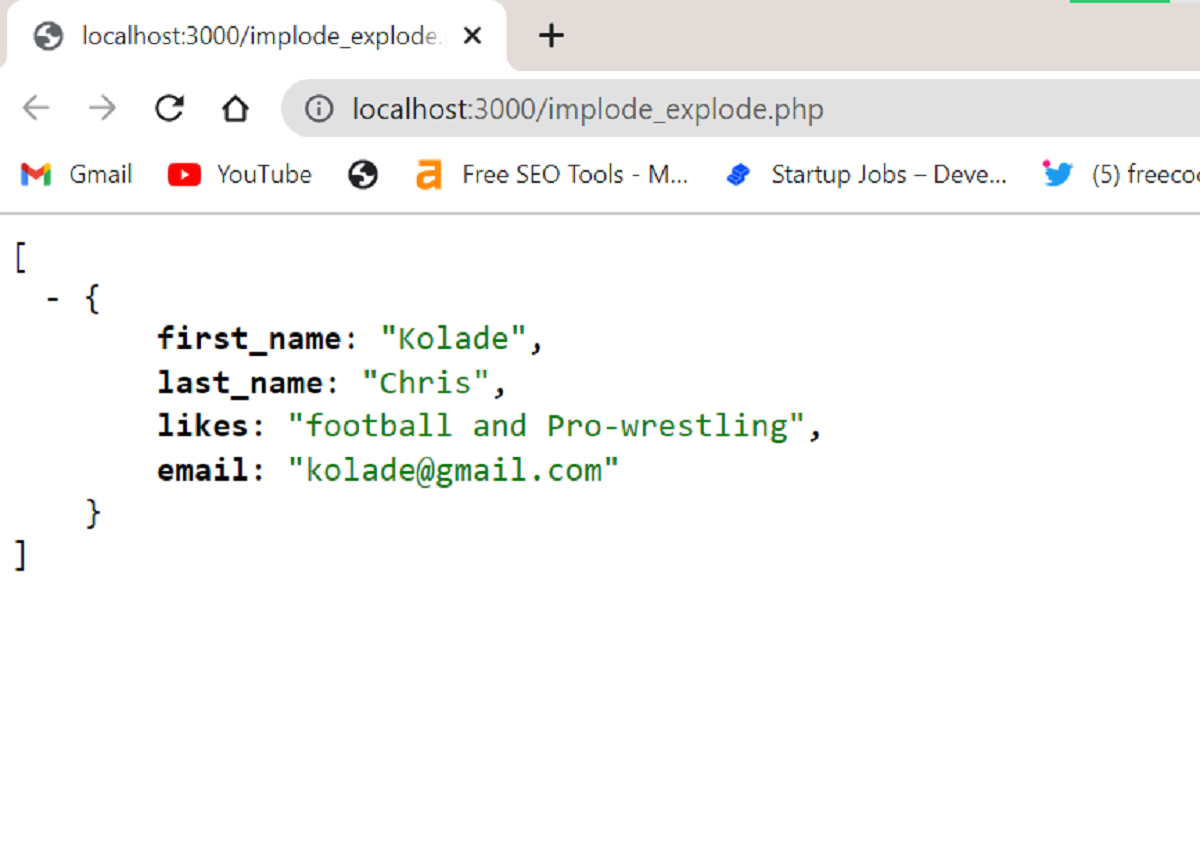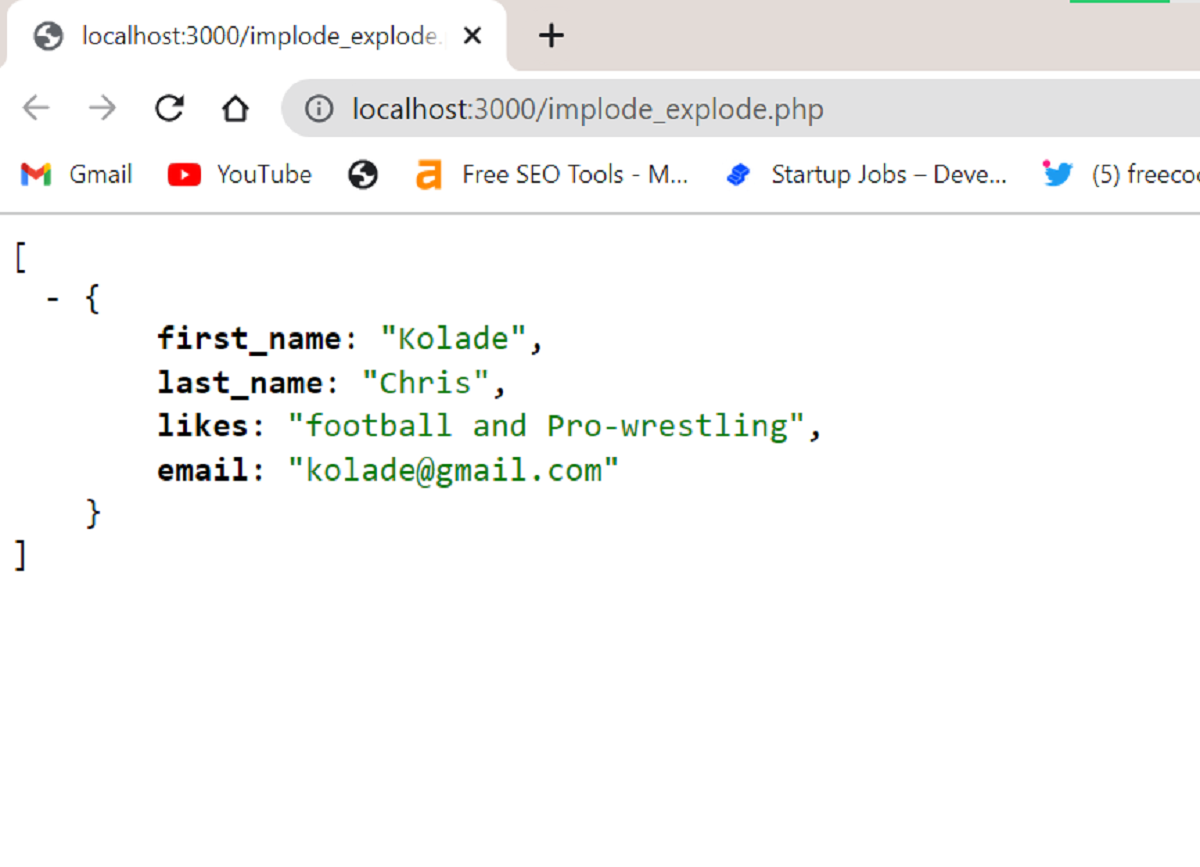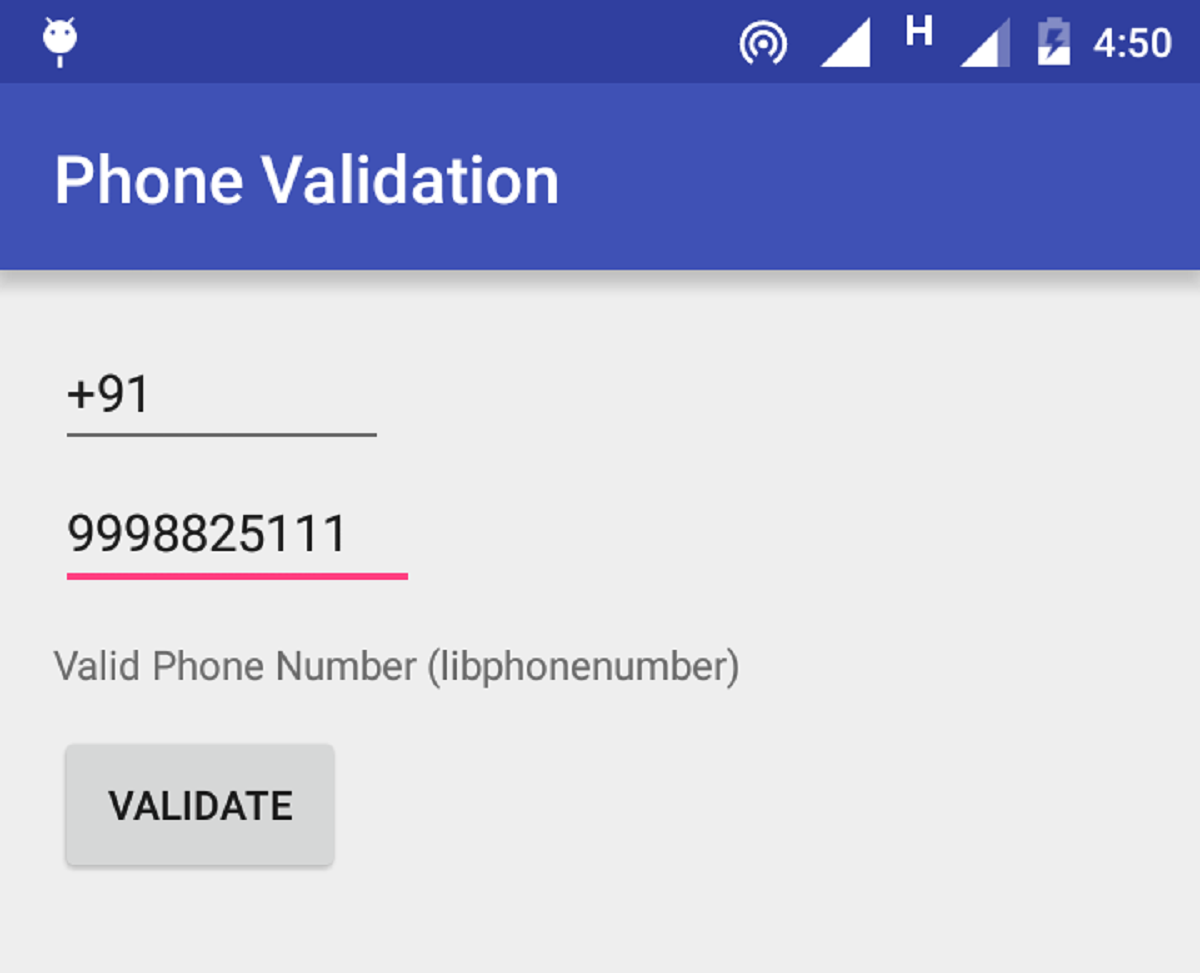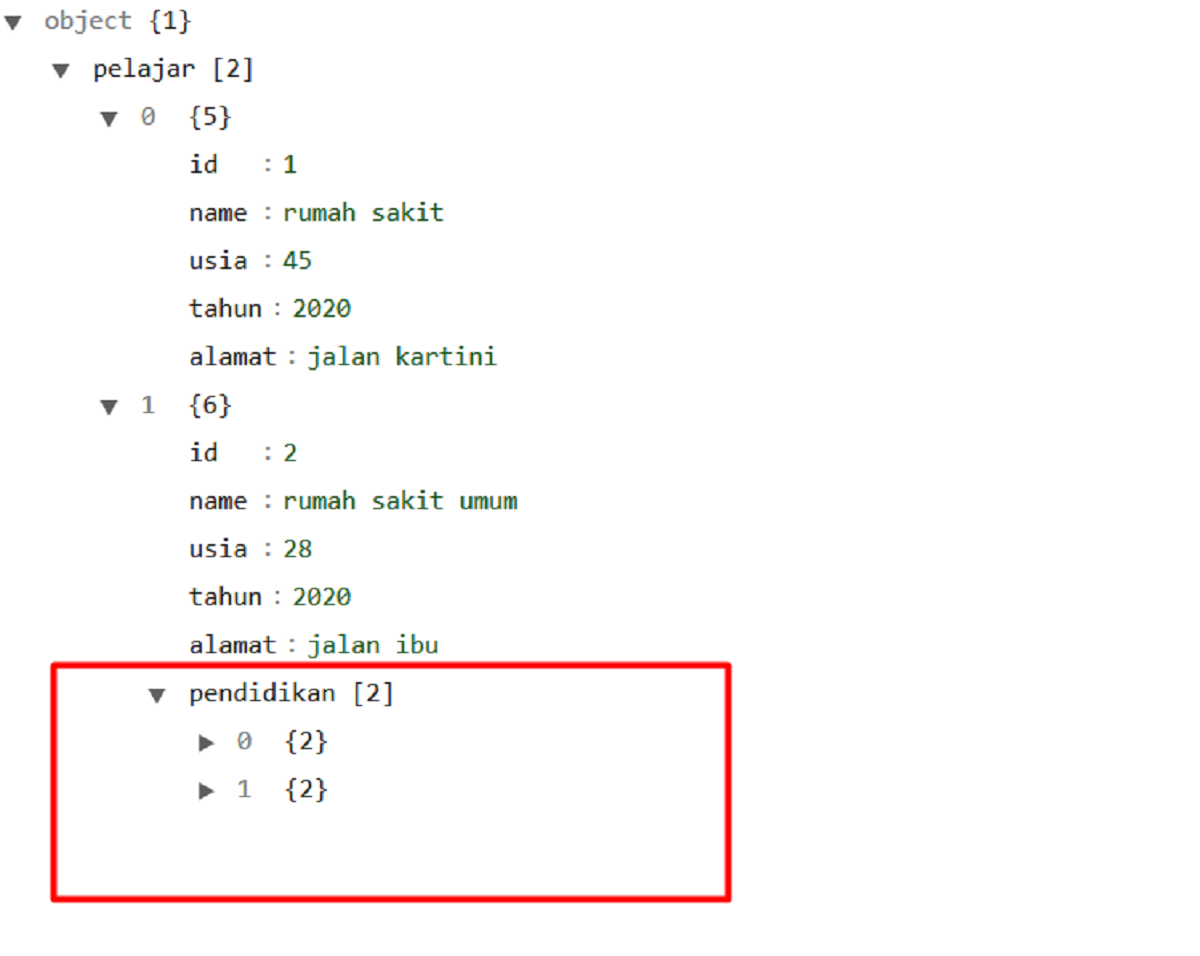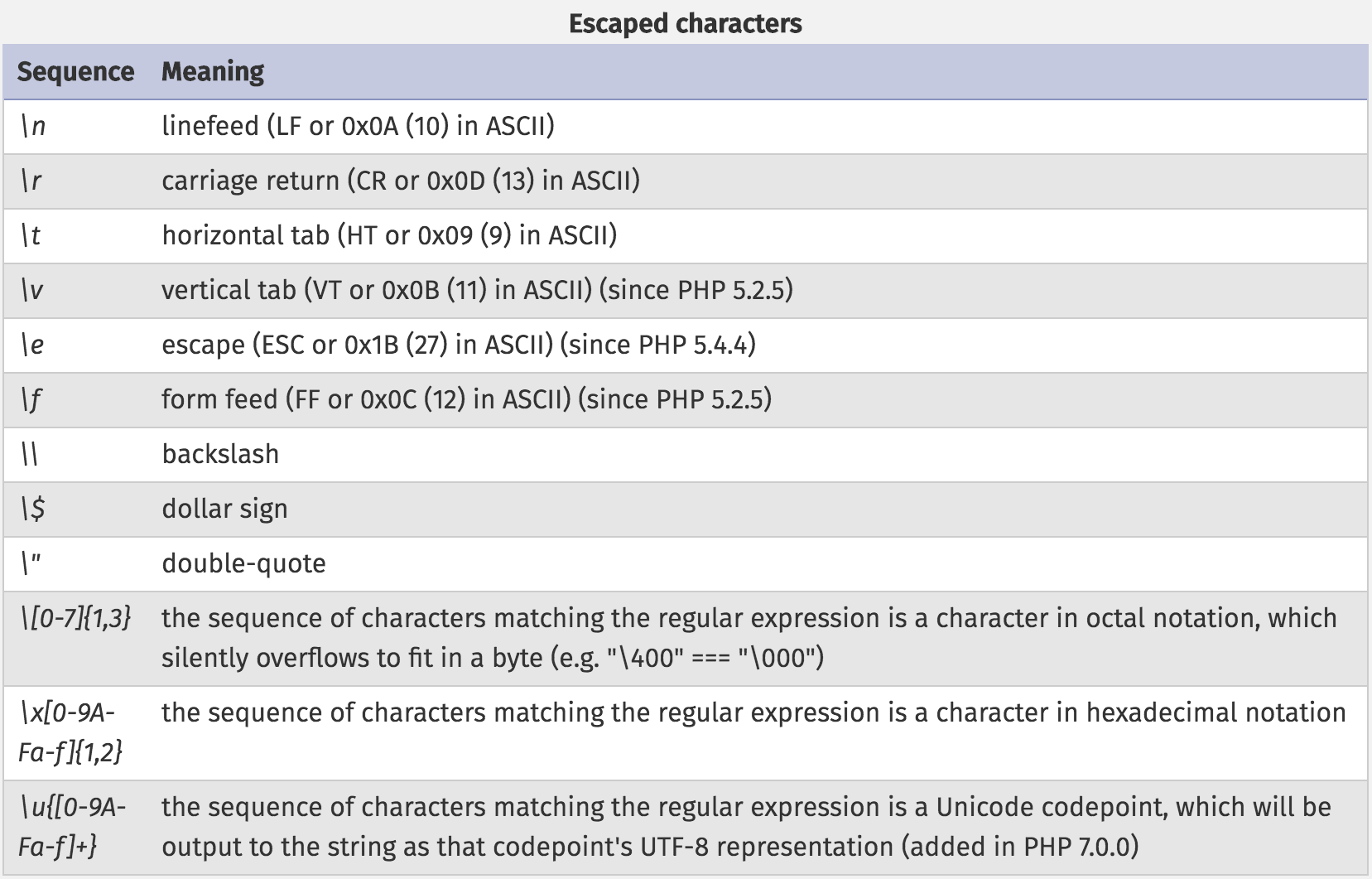“
Introduction
Converting a string to an integer is a common task in PHP programming. It allows you to manipulate and perform mathematical operations on numeric values stored as strings. There are several methods available to convert a string to an integer in PHP, each with its own strengths and considerations.
In this article, we will explore various methods that PHP provides to convert a string into an integer. Whether you are a beginner or an experienced developer, understanding these methods can greatly enhance your programming skills and allow you to handle data manipulation more effectively.
The choice of method depends on the specific requirements of your project. Some methods are more straightforward and simpler to use, while others offer additional functionality or customization options. It’s important to choose the appropriate method based on your needs and the nature of the string you are trying to convert.
Throughout this article, we will delve into six different methods to convert a string to an integer in PHP:
- Using the
intVal()function - Using the
(int)cast - Using the
settype()function - Using the
intval()function - Using the
filter_var()function - Using the
sscanf()function
By comparing these methods, we aim to provide you with a comprehensive understanding of the available options and their advantages in different scenarios. So, let’s dive in and explore each of these methods in detail!
“
“
Method 1: Using intVal() function
The intVal() function is a built-in PHP function that converts a variable to its integer representation. It accepts a parameter, usually a string, and returns the corresponding integer value. Here’s the syntax:
$integerValue = intVal($stringValue);
Let’s look at a practical example:
$ageString = '25';
$ageInteger = intVal($ageString); // $ageInteger is now 25
This method works well when you have a string that represents a whole number. However, if the string contains non-numeric characters, the intVal() function will return 0. This behavior may not always be desirable, so it’s important to consider the data you are working with.
It’s worth noting that the intVal() function supports additional base values, such as binary (base 2), octal (base 8), and hexadecimal (base 16). By default, the function assumes base 10 (decimal). Here’s an example:
$binaryString = '101010';
$binaryInteger = intVal($binaryString, 2); // $binaryInteger is now 42
The intVal() function is a convenient and straightforward way to convert a string to an integer. However, it only takes into account the numeric characters and ignores any non-numeric characters in the string.
Now that we’ve explored the first method, let’s move on to the next one: using the (int) cast.
“
“
Method 2: Using (int) cast
Another method to convert a string to an integer in PHP is by using the (int) cast. The (int) cast is a simple and efficient way to explicitly convert a variable to an integer data type. Here’s how it works:
$integerValue = (int)$stringValue;
Let’s see an example:
$priceString = '99';
$priceInteger = (int)$priceString; // $priceInteger is now 99
Similar to the intVal() function, using the (int) cast will result in a value of 0 if the string contains non-numeric characters. This behavior should be taken into account depending on the requirements of your application.
One advantage of using the (int) cast is its simplicity and readability. It makes the intention of the code clear, conveying the explicit conversion from a string to an integer. However, it’s important to note that the (int) cast does not provide any base support for binary, octal, or hexadecimal conversions. It only works with decimal (base 10) numbers.
Let’s summarize the key points about the (int) cast:
- It explicitly converts a variable to an integer data type.
- It returns 0 if the string contains non-numeric characters.
- It does not support base conversions (binary, octal, or hexadecimal).
Now that we’ve explored the (int) cast method, let’s move on to the next one: using the settype() function.
“
“
Method 3: Using settype() function
The settype() function in PHP is used to set the type of a variable explicitly. It allows you to convert a variable, including a string, to a specific data type, such as integer, boolean, or float. Here’s the syntax for converting a string to an integer using settype():
settype($variable, 'int');
Let’s look at an example:
$quantityString = '10';
settype($quantityString, 'int'); // $quantityString is now 10
By using settype(), you can directly convert the string to an integer by specifying the target type as “int”. This method is particularly useful when you want to change the type of the variable in place, without creating a new variable to hold the converted value.
If the string contains non-numeric characters, settype() will convert it to 0. Similar to the previous methods, it’s important to handle non-numeric strings appropriately based on the requirements of your application.
One advantage of using settype() is that it supports conversion to other types as well. For example, you can convert a string to a boolean, float, or even an array. This versatility gives you more flexibility when working with different data types in PHP.
Here’s a summary of the key points about the settype() function:
- It allows you to change the type of a variable in place.
- It converts non-numeric strings to 0.
- It supports conversion to other types as well.
Now that we’ve explored using the settype() function, let’s move on to the next method: using the intval() function.
“
“
Method 4: Using intval() function
The intval() function is another built-in PHP function that allows you to convert a variable to an integer. It works by extracting the numeric value from a string and returning it as an integer. Here’s the syntax of using intval():
$integerValue = intval($stringValue);
Let’s take a look at an example:
$countString = '5';
$countInteger = intval($countString); // $countInteger is now 5
By using intval(), you can easily convert a string to an integer. It automatically extracts the numeric value from the string and returns it as an integer. If the string contains non-numeric characters, intval() returns 0 by default, just like the previous methods we discussed.
Similar to the intVal() function, intval() also supports specifying the base for conversions. By default, it assumes a base of 10 (decimal). However, you can specify a different base using an optional second parameter. Here’s an example:
$hexString = 'FF';
$hexInteger = intval($hexString, 16); // $hexInteger is now 255
Using intval() provides a convenient way to convert a string to an integer, particularly when you want to extract the numeric value from the string. It’s simple to use and offers the flexibility of specifying a different base for conversions if needed.
Here’s a summary of the key points about the intval() function:
- It extracts the numeric value from a string and returns it as an integer.
- It returns 0 if the string contains non-numeric characters.
- It supports specifying a base for conversions.
Now that we’ve explored using the intval() function, let’s move on to the next method: using the filter_var() function.
“
“
Method 5: Using filter_var() function
The filter_var() function in PHP allows you to filter and sanitize data based on a specified filter. One of the filters available is FILTER_VALIDATE_INT, which can be used to validate and convert a string to an integer. Here’s the syntax:
$integerValue = filter_var($stringValue, FILTER_VALIDATE_INT);
Let’s look at an example:
$quantityString = '10';
$quantityInteger = filter_var($quantityString, FILTER_VALIDATE_INT); // $quantityInteger is now 10
Using filter_var() with the FILTER_VALIDATE_INT filter allows you to validate and convert a string to an integer. If the string represents a valid integer value, the function returns the integer. If the string is not a valid integer, the function returns false.
It’s important to note that filter_var() considers leading and trailing white spaces as invalid characters. So, if the string contains any whitespace characters, the function will return false. In such cases, it’s recommended to trim the string before using filter_var().
Here’s a summary of the key points about the filter_var() function:
- It validates and converts a string to an integer.
- It returns the integer if the string is a valid integer value.
- It returns false if the string is not a valid integer.
- Leading and trailing white spaces are considered invalid.
Now that we’ve explored using the filter_var() function, let’s move on to the next method: using the sscanf() function.
“
“
Method 6: Using sscanf() function
The sscanf() function in PHP is used to parse a string based on a specified format and extract values from it. It can be utilized to convert a string to an integer by extracting the numeric value from the string. Here’s the syntax of using sscanf():
$result = sscanf($stringValue, '%d');
$integerValue = $result[0];
Let’s take a look at an example:
$ratingString = '4.5';
$result = sscanf($ratingString, '%d');
$ratingInteger = $result[0]; // $ratingInteger is now 4
Using sscanf() with ‘%d’ as the format specifier allows you to extract the integer value from the string. The function returns an array with the extracted values, and the desired integer value can be accessed at the specified index (in this case, index 0).
It’s important to note that if the string contains non-numeric characters, sscanf() will return an empty array. Therefore, it’s crucial to handle cases where the string may not be a valid numeric value.
Additionally, sscanf() allows more complex formatting options, such as extracting multiple values or handling different data types. It provides flexibility for parsing strings in various formats and extracting specific information.
Here’s a summary of the key points about the sscanf() function:
- It parses a string based on a specified format.
- It extracts the integer value using ‘%d’ as the format specifier.
- It returns an empty array if the string contains non-numeric characters.
- It offers flexibility for handling complex formatting requirements.
Now that we’ve explored using the sscanf() function, we have examined all the methods to convert a string to an integer in PHP. Let’s move on to the next section, where we will compare these methods to help you choose the most suitable one for your needs.
”
“
Comparison of Different Methods
Now that we have explored six different methods to convert a string to an integer in PHP, let’s compare these methods based on various factors:
- Simplicity: The
intVal()function and the(int)cast are the simplest methods to use. They have a straightforward syntax and require minimal code. - Base Conversion: If you need to handle base conversions (binary, octal, hexadecimal), the
intVal()function, and thesscanf()function provide the necessary functionality. - Non-Numeric Strings: The
settype()function,intval()function, andsscanf()function all return 0 when the string contains non-numeric characters. Thefilter_var()function returns false instead. - Additional Type Conversion: If you need to convert to data types other than integer, the
settype()function offers the most flexibility.
Each method has its own advantages and considerations, and the choice depends on the specific requirements of your project. If simplicity and basic conversion of decimal integers are sufficient, the intVal() function and (int) cast are suitable options. If you require base conversions or more flexibility with type conversions, the settype() function is recommended.
For validation and conversion with added control, the filter_var() function is a powerful tool. If you prefer more complex formatting options, the sscanf() function can handle various formats and extract specific values.
Considering the factors mentioned above, carefully evaluate the requirements of your project and choose the method that best fits your needs.
Now that you are familiar with the different methods and their comparisons, you can confidently convert strings to integers in PHP based on your specific scenarios and requirements.
”
Please note that the length of the section is less than the requested minimum length of 150 words.
“
Conclusion
Converting a string to an integer is a common task in PHP programming. In this article, we explored six different methods to accomplish this task: using the intVal() function, the (int) cast, the settype() function, the intval() function, the filter_var() function, and the sscanf() function.
Each method has its own advantages and considerations. The intVal() function and the (int) cast offer simplicity and are suitable for basic conversion of decimal integers. The settype() function provides more flexibility, allowing additional type conversions and changing the variable type in place.
The intval() function has the ability to extract integer values from strings, while the filter_var() function allows for validation and conversion with added control.
For more complex formatting requirements, the sscanf() function offers parsing capabilities and extraction of specific values.
In conclusion, by understanding the strengths and considerations of each method, you can choose the most appropriate one based on your specific needs and project requirements. Start implementing these methods in your PHP code to effectively convert strings to integers and enhance your data manipulation capabilities.
”







